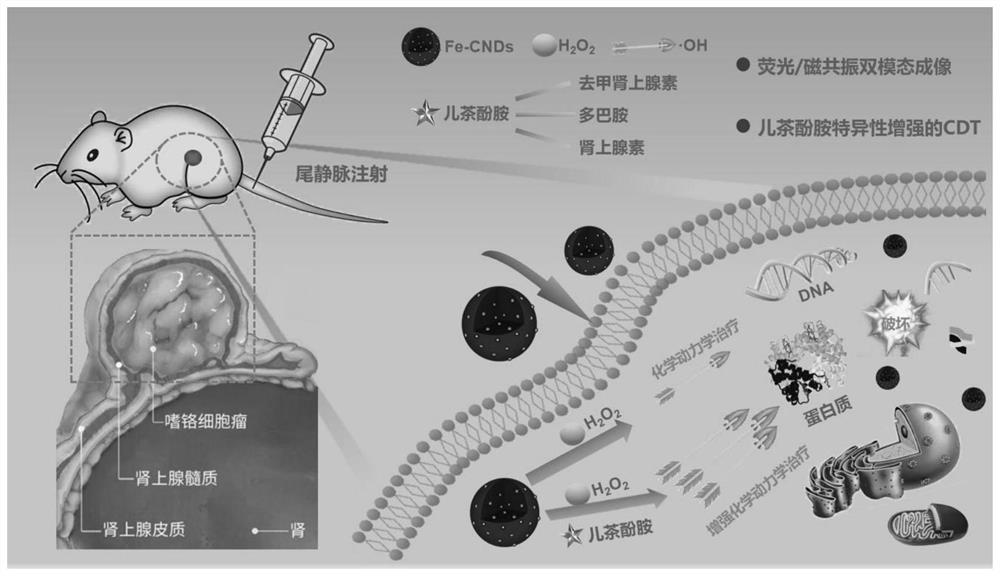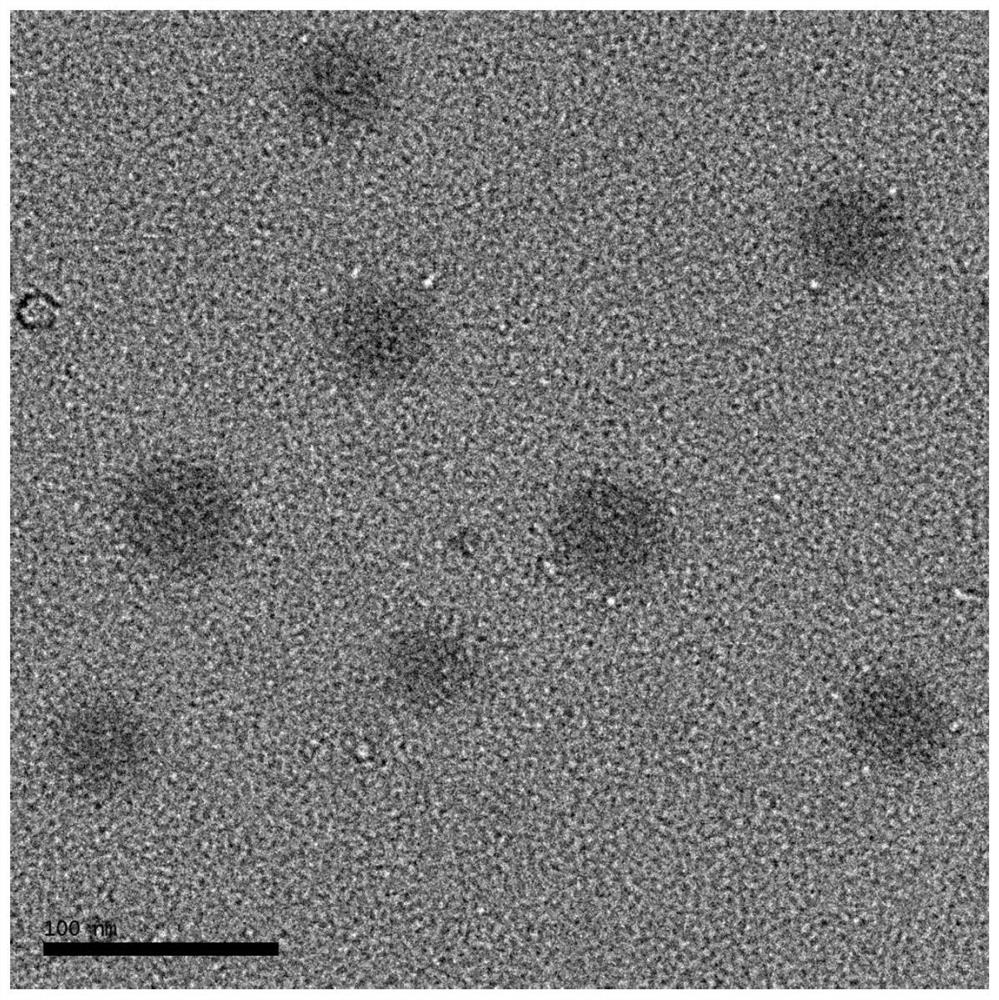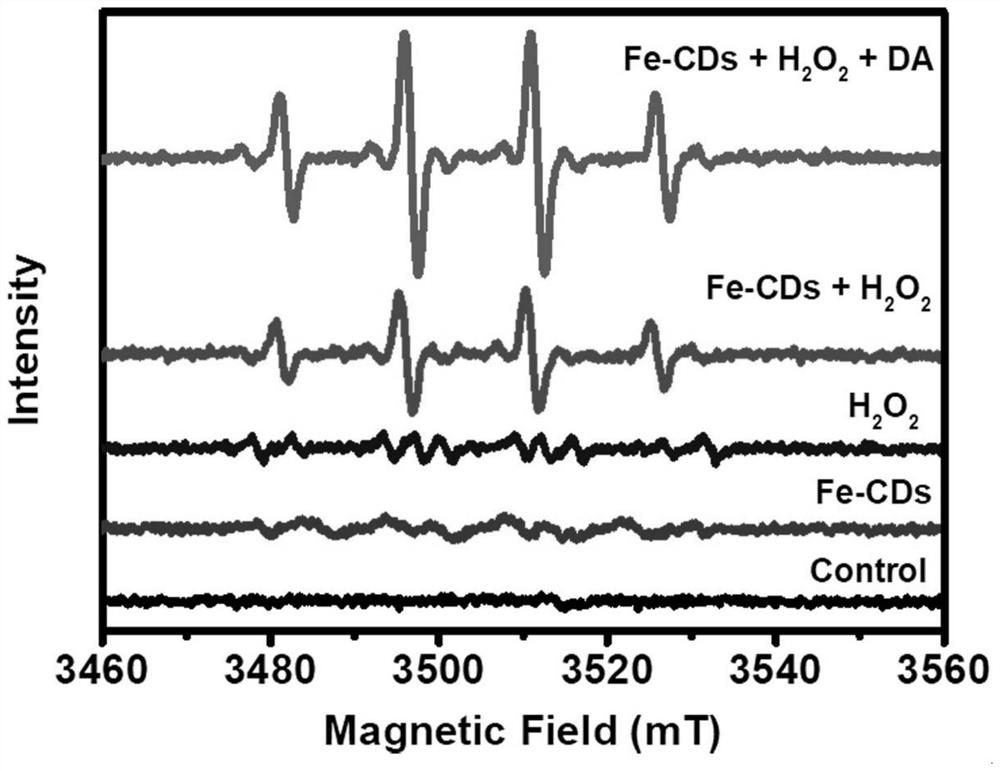Catecholamine specific response type iron-doped carbon nanodot as well as preparation method and application thereof
A carbon nanodot and catecholamine technology, applied in the field of biomedical materials, can solve the problems of difficult localization and diagnosis of pheochromocytoma, difficult timely and effective treatment, limited tumor, etc., and achieves excellent diagnosis and treatment effect, efficient killing, and strong enrichment ability. Effect
- Summary
- Abstract
- Description
- Claims
- Application Information
AI Technical Summary
Problems solved by technology
Method used
Image
Examples
Embodiment 1
[0042] Example 1: Ferric chloride hexahydrate (67.5mg), sodium acetate (180mg), polyethylene glycol (50mg), ethylene glycol (40ml), citric acid (100mg), urea (200mg) were stirred and mixed The solution was prepared, added to a solvothermal reaction kettle, and heated at 200°C for 8 hours. The resulting mixture solution was centrifuged, and the supernatant was dialyzed, passed through a filter membrane with a pore size of 220 nm, and freeze-dried to prepare catecholamine-responsive iron-doped carbon nanodots.
[0043] The working principle of catecholamine-specific responsive carbon dots in the diagnosis and treatment of pheochromocytoma figure 1 Shown:
[0044] Due to the passive targeting effect of nanomaterials on tumor tissue, iron-doped carbon nanodots are enriched in large quantities in pheochromocytoma. Imaging can determine the distribution of carbon nanodots in the body, and then realize the precise diagnosis and positioning of pheochromocytoma. At the same time, ex...
Embodiment 2
[0048] Embodiment 2: Stir ferric oxide (80mg), polyethylene glycol (50mg), ethylene glycol (40ml), citric acid (100mg), urea (200mg) and stir and mix the preparation solution, add solvothermal reaction kettle in , heated at 200°C for 8 hours. The resulting mixture solution was centrifuged, and the supernatant was dialyzed, passed through a filter membrane with a pore size of 220 nm, and freeze-dried to prepare catecholamine-responsive iron-doped carbon nanodots.
Embodiment 3
[0049] Example 3: Ferric chloride hexahydrate (67.5mg), sodium acetate (180mg), polyethylene glycol (50mg), ethylene glycol (40ml), polyamine (80mg), urea (200mg) were stirred and mixed Prepare the solution, put it into a solvothermal reaction kettle, and heat at 200°C for 8 hours. The resulting mixture solution was centrifuged, and the supernatant was dialyzed, passed through a filter membrane with a pore size of 220 nm, and freeze-dried to prepare catecholamine-responsive iron-doped carbon nanodots.
PUM
| Property | Measurement | Unit |
|---|---|---|
| particle diameter | aaaaa | aaaaa |
| particle diameter | aaaaa | aaaaa |
Abstract
Description
Claims
Application Information
 Login to View More
Login to View More - R&D
- Intellectual Property
- Life Sciences
- Materials
- Tech Scout
- Unparalleled Data Quality
- Higher Quality Content
- 60% Fewer Hallucinations
Browse by: Latest US Patents, China's latest patents, Technical Efficacy Thesaurus, Application Domain, Technology Topic, Popular Technical Reports.
© 2025 PatSnap. All rights reserved.Legal|Privacy policy|Modern Slavery Act Transparency Statement|Sitemap|About US| Contact US: help@patsnap.com



